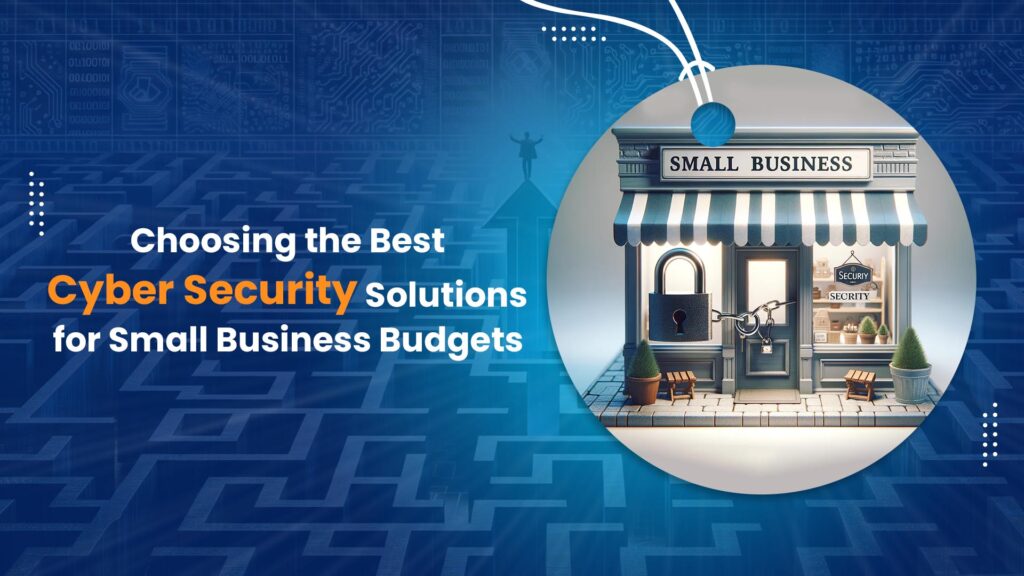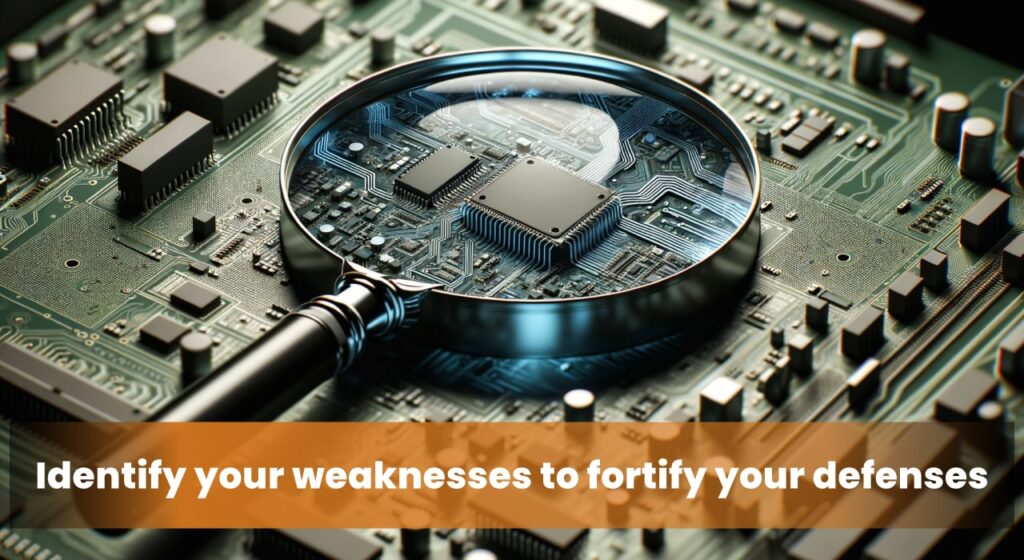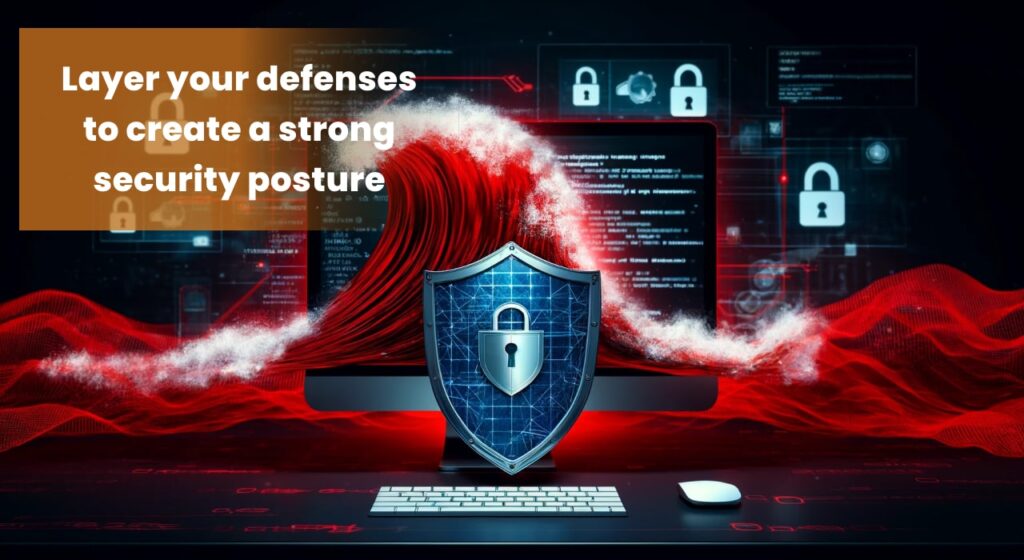
The Cybersecurity Imperative for Small Businesses
The digital age has empowered small businesses like never before, but it has also introduced a formidable foe: cybercrime. Sophisticated attackers are constantly devising new methods to infiltrate vulnerabilities, and unfortunately, small businesses are often seen as easier targets. A 2023 study by Verizon revealed that 43% of all cyberattacks targeted small and medium-sized businesses (SMBs), highlighting their growing vulnerability in the evolving threat landscape.
The financial repercussions of a cyberattack on a small business can be devastating. The IBM Cost of a Data Breach Report 2023 found the global average cost of a data breach to be a staggering $4.35 million. For a small business with limited resources, such a financial blow can be crippling, potentially leading to business closure. The emotional toll can be equally significant, as a data breach can erode customer trust and damage a company’s reputation for years to come.
The good news is that small businesses don’t need to be defenseless. By adopting a layered security approach, even businesses with limited budgets can significantly improve their cybersecurity posture. This approach involves implementing a combination of preventative and detective measures, creating multiple hurdles for attackers to overcome. By layering these defenses, even if one element is breached, others remain intact, minimizing the potential damage. In the following sections, we’ll explore how to conduct a thorough cybersecurity assessment, prioritize your needs, and choose the most effective solutions to fortify your small business defenses within your budget.
Why Cybersecurity Matters for Small Businesses?

While large enterprises have dedicated security teams and robust IT infrastructure, small businesses often lack these resources. This disparity creates inherent vulnerabilities that cybercriminals exploit. Unlike their larger counterparts, small businesses might have weaker firewalls, outdated software, and limited employee cybersecurity awareness training, creating exploitable security gaps (a concept further explored in security gap analysis).
These vulnerabilities make small businesses prime targets for a variety of data breaches. The Verizon Data Breach Investigations Report consistently highlights the prevalence of attacks targeting SMBs. Common tactics include phishing emails, malware infections, and point-of-sale (POS) system compromises. The cost of such breaches can be significant. According to the 2023 IBM Cost of a Data Breach Report, the average cost for a data breach involving a small business is a staggering $2.9 million. This financial burden can cripple a small business, potentially leading to layoffs or even closure.
Beyond the financial impact, data breaches can inflict serious reputational damage. Customers entrust small businesses with their personal information, and a breach can erode that trust. Negative publicity and customer churn can have a lasting impact on a small business’s ability to operate and grow. Furthermore, depending on the type of data compromised, legal ramifications can arise. Regulations like the General Data Protection Regulation (GDPR) and the Health Insurance Portability and Accountability Act (HIPAA) impose strict data security requirements and hefty fines for non-compliance. By neglecting cybersecurity, small businesses expose themselves to a multitude of risks that can threaten their very existence.
Conducting a Cybersecurity Risk Assessment

A cybersecurity risk assessment is a systematic process of identifying, evaluating, and prioritizing potential vulnerabilities within your organization’s IT infrastructure. This crucial exercise provides a clear picture of your cybersecurity posture, allowing you to allocate resources strategically to address the most pressing risks. By proactively identifying weaknesses, you can significantly reduce the likelihood of a successful cyberattack.
There are two primary approaches to conducting a cybersecurity risk assessment:
- Self-Assessment: This cost-effective method allows small businesses to assess their own vulnerabilities using readily available resources. The National Institute of Standards and Technology (NIST) Cybersecurity Framework provides a comprehensive framework that guides businesses through the risk assessment process. It offers free tools and resources to help identify, assess, prioritize, address, and continuously monitor cybersecurity risks.
- Professional Assessment: For businesses with complex IT environments or limited in-house expertise, engaging a professional cybersecurity firm can be highly beneficial. These firms possess the specialized knowledge and tools to conduct a thorough assessment, uncovering even obscure vulnerabilities. However, professional assessments typically come at a significant cost.
| Factor | Self-Assessment | Professional Assessment |
|---|---|---|
| Cost | Low (Free resources available) | High |
| Expertise Required | Limited | Extensive |
| Depth of Analysis | Moderate | Deep and comprehensive |
| Suitability for Small Businesses | Ideal for businesses with basic IT infrastructure and limited budgets | Ideal for businesses with complex IT environments or a high risk profile |
While a self-assessment may not be as in-depth as a professional assessment, it offers a valuable starting point for small businesses. By understanding your vulnerabilities, you can prioritize your cybersecurity needs and allocate resources effectively. Remember, a risk assessment is an ongoing process. As your business evolves and the threat landscape changes, it’s crucial to regularly revisit your assessment and adapt your cybersecurity strategy accordingly.
To delve deeper into identifying and addressing your business’s cybersecurity vulnerabilities, check out our detailed guide on Effective Security Gap Analysis Techniques for Small Businesses.
Prioritizing Cybersecurity Needs: A Strategic Approach

Following a thorough cybersecurity risk assessment (you can revisit the concept of a cybersecurity risk assessment if needed), you’ll have a comprehensive list of vulnerabilities. However, addressing every vulnerability simultaneously might not be feasible, especially for small businesses with limited resources. This is where prioritization comes in.
Effective prioritization requires a clear understanding of the potential impact of each identified risk. Gap analysis, a technique often used in conjunction with risk assessments, can help visualize these gaps in your defenses. By analyzing the sensitivity of the data at risk, the likelihood of a particular attack occurring, and the potential financial and reputational damage, you can assign a risk score to each vulnerability.
Here are some key factors to consider when prioritizing cybersecurity needs:
- Data Sensitivity: Information such as customer credit card numbers, social security numbers, or intellectual property requires the highest level of protection.
- Likelihood of Attack: Certain vulnerabilities, like outdated software with known exploits, are more likely to be targeted by attackers.
- Potential Impact: Consider the financial and reputational consequences of a successful attack exploiting a specific vulnerability.
By prioritizing vulnerabilities based on these factors, you can focus your limited resources on addressing the most critical threats first. This allows for a more strategic allocation of your cybersecurity budget.
The good news is that you don’t need to rely solely on expensive point solutions to address all your security needs. A layered security approach utilizes a combination of preventative, detective, and corrective controls to create multiple hurdles for attackers. Implementing basic measures like endpoint protection software, firewalls, and employee security awareness training can significantly improve your overall security posture, even on a budget. In the next section, we’ll explore some of the essential cybersecurity solutions for small businesses.
Top Cybersecurity Solutions for Small Businesses

While a layered security approach doesn’t guarantee complete invulnerability, it significantly strengthens your defenses against a wide range of cyber threats. Here are some essential cybersecurity solutions that small businesses should prioritize:
- Endpoint Protection Software: This software acts as a first line of defense, safeguarding individual devices like computers and laptops from malware, viruses, and other malicious threats. Many endpoint protection solutions offer real-time protection, continuously scanning for and stopping threats before they can infect your system.
- Firewalls: Firewalls act as a gatekeeper, filtering incoming and outgoing network traffic based on predefined security rules. They can block unauthorized access attempts and prevent sensitive data from leaving your network.
- Strong Password Management: Implementing strong password policies and enforcing regular password changes are crucial for safeguarding your accounts. Consider using a password manager to generate and store complex passwords securely.
- Multi-Factor Authentication (MFA): MFA adds an extra layer of security by requiring a second verification factor, such as a code from your phone, in addition to your password when logging in to sensitive accounts. This significantly reduces the risk of unauthorized access even if your password is compromised.
- Data Encryption: Data encryption scrambles sensitive information, rendering it unreadable to unauthorized individuals. This is particularly important for protecting confidential data at rest (stored on devices) and in transit (being transmitted over a network).
- Employee Security Awareness Training: Employees are often the first line of defense against cyberattacks. Regular security awareness training can educate them on common threats, phishing tactics, and best practices for protecting sensitive information. Many government agencies and cybersecurity organizations offer free or low-cost security awareness training resources.
For small businesses with limited IT resources, partnering with a Managed Security Service Provider (MSSP) can be a valuable option. MSSPs offer a range of cybersecurity services, including threat monitoring, security incident response, and ongoing security management. This allows small businesses to benefit from the expertise of cybersecurity professionals without the need to build their own internal security team.
In the next section, we’ll explore how to evaluate and select the best cybersecurity solutions for your small business based on your specific needs and budget.
Evaluating and Selecting Cybersecurity Solutions

Having identified your critical cybersecurity needs, you’re now ready to explore the vast landscape of available solutions. Selecting the right tools requires careful consideration to ensure they effectively address your specific requirements while remaining manageable within your budget.
Here are some key factors to evaluate when choosing cybersecurity solutions for your small business:
- Compatibility: Ensure the chosen solution seamlessly integrates with your existing IT infrastructure, including operating systems, network configurations, and other software applications. Compatibility issues can lead to disruptions and additional costs.
- Scalability: Consider your future growth plans. Select solutions that can scale alongside your business to meet evolving security needs. Inflexible solutions can become cumbersome and expensive as your business expands.
- Ease of Use and Management: The complexity of the solution should be aligned with your IT expertise. User-friendly solutions with intuitive interfaces require minimal training and maintenance resources, minimizing the burden on your IT staff.
- Vendor Reputation and Customer Support: Research the vendor’s track record in the cybersecurity industry. Look for vendors with a strong reputation for product quality, security updates, and responsive customer support. Reliable customer support is crucial for troubleshooting any issues that may arise.
- Cost and Pricing Models: Cybersecurity solutions come with varying price points and licensing models. Consider the upfront cost of software licenses, ongoing subscription fees, and any additional implementation or training costs. Many vendors offer tiered pricing plans, allowing you to choose a solution that aligns with your budget and specific security needs.
By carefully evaluating these factors, you can make informed decisions when selecting cybersecurity solutions for your small business. Remember, the most expensive solution isn’t always the best fit. The ideal solution should offer robust protection, seamless integration, and a manageable cost structure.
Building a Culture of Cybersecurity
In today’s ever-evolving threat landscape, a proactive approach to cybersecurity is no longer optional for small businesses. By following the steps outlined in this article, you can conduct a thorough risk assessment, prioritize your vulnerabilities, and select cost-effective solutions that effectively address your specific needs.
Remember, cybersecurity is an ongoing process. The threat landscape constantly changes, and new vulnerabilities emerge. Regularly monitor your systems for suspicious activity, update your security software promptly, and revisit your risk assessment periodically to ensure your defenses remain effective. Don’t hesitate to seek additional resources from reputable cybersecurity organizations or consult with professional security experts. By prioritizing cybersecurity and establishing a culture of security awareness within your organization, you can significantly reduce your risk of falling victim to a cyberattack and safeguard your valuable business assets.
Categorized in:
Comments